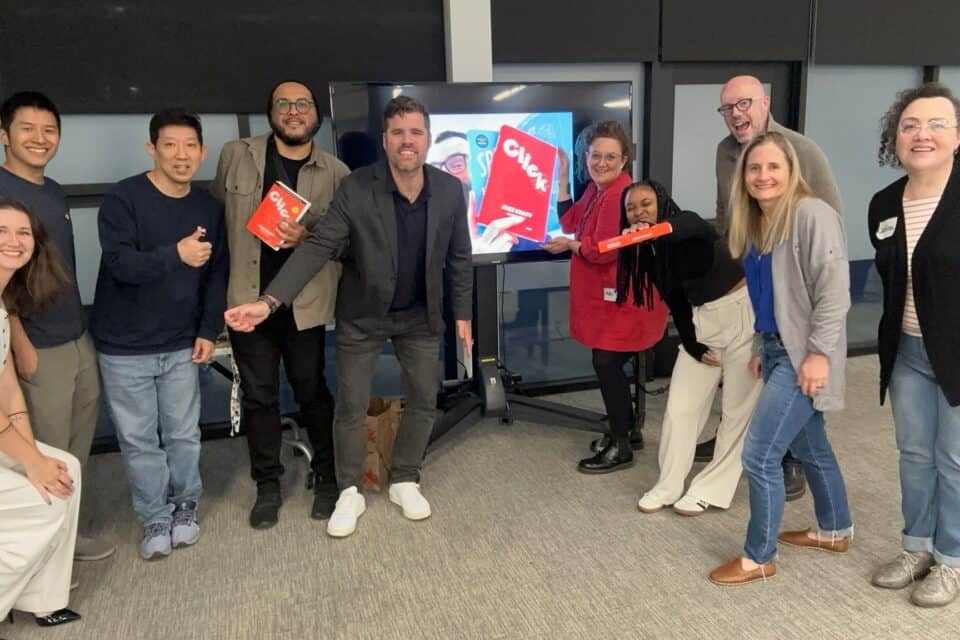Learn more about meetings to level up your own like a pro
The global workforce is no stranger to meetings. Based on the odds alone, there’s a good chance you are sitting in a meeting while reading this – after all, around 35-50% of the average workweek is spent in meetings. We even have an entire category on our blog dedicated to meetings and meeting culture– from how to run them better to how to cater them to the virtual landscape.
In fact, according to Inc. and the Massachusetts Institute of Technology’s Sloan School of Management, executives spend about 23 hours a week in meetings on average. And that number is only going up as we become more connected through technology. Having Slack, Zoom, and a myriad of other tools provides more options for virtual meetings (in addition to standard meetings), making it even easier and more accessible to message someone and ask to quickly hop on a video call. Today’s environment due to COVID-19 is changing the way we do meetings and business in general. There is a shift from “Let’s meet in the conference room” to “Let’s hop on a Zoom,” bringing about an entirely new set of changes and challenges. Note: These changes also require a whole new set of ground rules for virtual meetings.

There’s no doubt productive meetings have a time and place, but there’s also still a lot of room for improvement to keep meetings from going poorly. In this article, we share 5 fun facts about meetings and 5 expert ways to make them better.
Meeting Facts
Here are 5 fun facts about meetings that might surprise you:
- There are about 55 million meetings happening today around the world: According to Forbes, there are approximately 55 million meetings happening daily, and at least half of them are a waste of time, not achieving their intended objectives.
- Inefficient meetings cost businesses a projected total of $541 billion in resources last year: Yes, you read that correctly. That’s more than half a trillion dollars! A study by Doodle, the online scheduling service, analyzed data from 19 million meetings and interviewed 6,500 professionals across the US, UK, Germany, and Switzerland. Doodle found that the majority of the meetings observed were poorly organized and therefore not only a waste of time, but also a waste of money and resources.
- Time spent in meetings has increased 10% every year since 2000: Not only has time spent in meetings continued to increase 8-10% annually, but it is expected to continue increasing, according to the Wall Street Journal and consulting firm Bain & Co.
- The way workers feel about the effectiveness of meetings correlates with their general satisfaction (or dissatisfaction) with their jobs: A study done by Harvard Business Review and Steven Rogelberg of the University of North Carolina showed there is a direct correlation between meeting effectiveness and job satisfaction – “A few positive experiences a week cannot make up for a lot of excruciating, wasteful ones.”
- Virtual meetings offer some things that in-person ones don’t: Although most professionals prefer face to face meetings over calls or video chat, the new world of virtual meetings offer some things that in-person meetings don’t. Harvard Business Review discusses how some business activities, such as restructured “offsites” and brainstorming, have actually improved as a result of all the virtual tools that are now at our disposal. Pro tip: Tools like Kahoot! can engage employees and actually make meetings fun!
5 Tips for Better Meetings
Now that you know the good, the bad, the fun, and the not-so-fun about meetings, let’s look at how to make meetings more productive. Here is a summary of our 5 tips on how to run effective meetings:
- Identify a clear purpose: If there is not a clear idea to flush out and explore, there is no reason to have a meeting in the first place.
- Create an effective agenda: Include only what is crucial and pertains to the meeting objective, and send it to all attendees ahead of time. Once you’re in the meeting, stick to the schedule (and end on time).
- Encourage connection: Reserve the first part of the meeting for connection – check-in with attendees, pose an interesting question to start discussion, or use an icebreaker to help spark creativity. During the meeting, encourage equal participation from all attendees. Everyone wants to feel included, and more heads are better than one (especially when it comes to ideation and creative problem-solving).
- Do the work in the meeting, not after: This is one of our meeting mantras at Voltage Control. Instead of actionless discussions, we view meetings as collaborative group work sessions.
- Debrief, debrief, debrief: Specifically reserve time at the end of the meeting to debrief with the group. Summarize discussed topics, key takeaways, and decisions made. Then, assign tasks with clear owners and deadlines.

If your meetings lack organization, engagement, or outcomes, expert facilitation can also help. These are some of the tried and true methods that we adhere to here at Voltage Control – incorporating some or all of these meeting tips can help you and your organization have more successful and effective meetings. Remember, time is money – reducing time dedicated to meaningless meetings means more time for meaningful meetings, productivity, and pushing your business forward. Onward and upward!
Want to learn more about how to run Magical Meetings?
Join our upcoming Magial Meetings Mini-Workshop on Oct. 28 to learn how to create meetings that people actually want to attend. You will come out of this workshop with a renewed perspective on meetings as well as be equipped with the tools and expertise you need to be a meeting magician. Sign up today.





